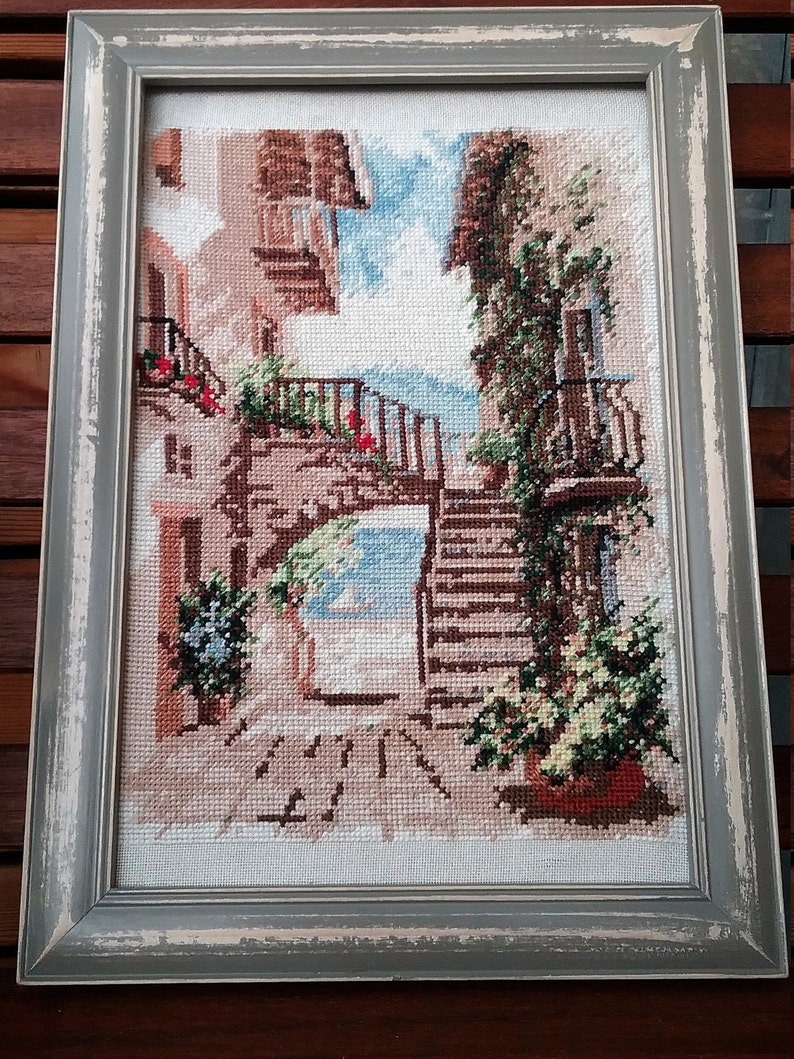

- #CROSS STITCH DESIGNER FRAME PORTABLE#
- #CROSS STITCH DESIGNER FRAME TRIAL#
Before investing in several frames, think ahead. If you end up with frames you dislike using, you can use them to display your finished projects. However, can substitute for personally working with these items. Other stitchers'Įxperiences can help you decide which models to start with. Online and read product reviews for specific frames. Then, if you prefer having your fabric held, look. Either borrow a friend's frame or purchase a small, basic model. Halfway through the project, switch to a scroll frame. Inexpensive way to get the feel for stitching while your fabric is On the second project, start stitching with a hoop (an #CROSS STITCH DESIGNER FRAME TRIAL#
If you are new toĬross stitch, select two small trial projects. Trying out frames is similar to trying out hoops.
Scroll rod pairs can be purchased alone for use with your existing extenders. One including 6", 12" and 18" scroll rods (with fabricĪttached for basting) and 6" and 8" extender bars is $45, seen on sale A frame kit allows you to mix and match extendersĪnd dowels. A single 6" scroll frame is around $18 (can beįound on sale for around $13). The written description may then also include the. Refers to the length of the dowel (the number of inches between the When looking up prices, the size (as in "Oak Scroll Frame, 12"). Be sure to use enough fabric to allowįor cutting off the strips and discarding them when finished, as theĪdhesive residue is difficult (and sometimes damagaing) to remove. Scroll frame with Velcro (TM) strips added to both the dowels and theĮdges of the cross stitch fabric. should loosen the tension whenever not stitching. Work on projects in a wide variety of sizes, you may need to buy severalįrames or purchase kits that allow you to build frames in several frames are less flexible than hoops, or if you. scroll rods or dowels can warp over time. if you use the adhesive velcro (TM) technique toĪttach your project to the rods, plan on cutting off and discarding. Which frame styles hold the fabric tension best you may have to try a stitchers have a wide variety of opinions on. #CROSS STITCH DESIGNER FRAME PORTABLE#
because they're larger, frames can be less portable than hoops.unless attached to a stand, larger frames are heavy to support after prolonged stitching.unless attached to a stand, either one hand must hold the scrollįrame while the other hand stitches, or you must prop up the frame.you can buy kits that allow you to combine individual components, making frames in several different sizes.does not leave rings or marks on fabric like hoops can.The other below the fabric, which increases stitching speed when attached to a stand, it leaves both handsįree, allowing those who use the stab method to keep a hand above and.they vary in the way you attach fabric to the rods.if your fabric is longer than the frame, the fabric can be rolled from side to side as you stitch the design.two parallel sides of a wooden frame areĬonstructed of two flattened strips of wood (often referred to asĮxtenders or spreaders), with two round scrolling dowels or rods making.fabric is left attached to the frame until the whole design is stitched.Only a section of your fabric taut, causing you to move it from place Stitching process, whereas an embroidery hoop is often smaller and keeps a frame keeps a whole piece of fabric taut throughout the entire.The fabric stretched between the rods keeps your workĬlick here to share YOUR experience working with scroll frames!Ĭlick here for Scroll Frame Reviews from Visitors.Ī frame keeps your fabric taut as you cross stitch. The only difference between those old scrolls and a cross stitch scroll is that parallel slats hold the rods at a fixedĭistance apart. Product description to determine the length of the extenders, commonly Of the dowels, usually ranging from 6" to 22". When comparing frames, the primary measurement refers to the length





 0 kommentar(er)
0 kommentar(er)
